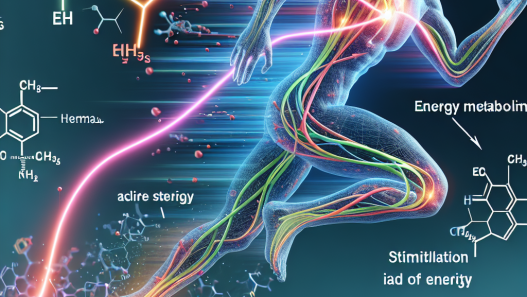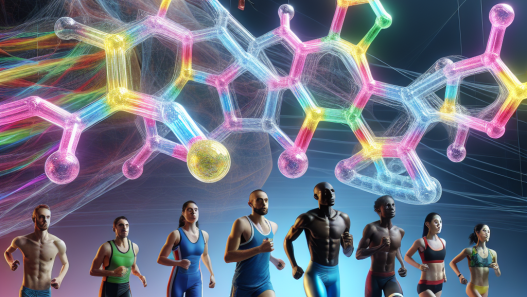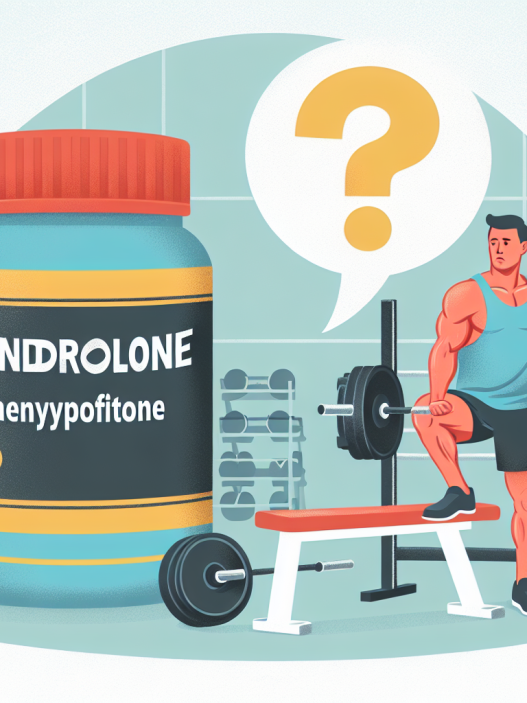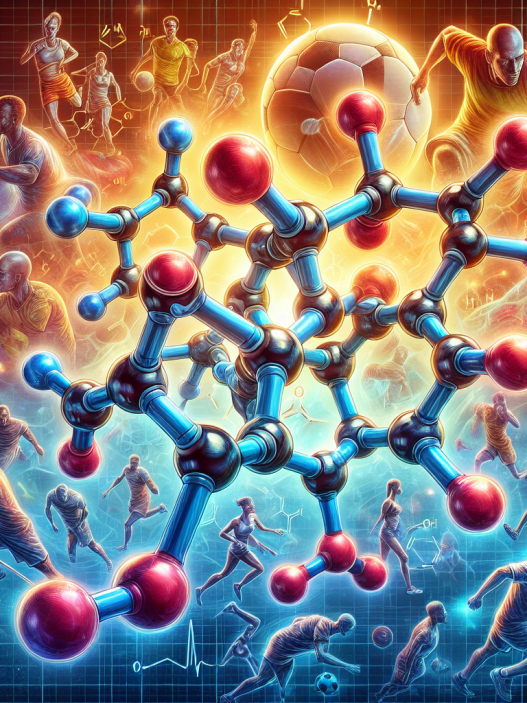-
Table of Contents
Nandrolone and Its Impact on Athletic Performance
Nandrolone, also known as 19-nortestosterone, is a synthetic anabolic-androgenic steroid (AAS) that has been used in the field of sports pharmacology for decades. It was first introduced in the 1960s and has since been widely used by athletes to enhance their performance. Nandrolone is classified as a Schedule III controlled substance by the United States Drug Enforcement Administration (DEA) and is banned by most sports organizations. Despite its controversial status, nandrolone continues to be a popular choice among athletes due to its potential to improve athletic performance.
Pharmacokinetics of Nandrolone
Nandrolone is available in various forms, including injectable solutions, oral tablets, and transdermal patches. The most commonly used form is nandrolone decanoate, which has a longer half-life compared to other forms. Once administered, nandrolone is rapidly absorbed into the bloodstream and reaches peak levels within 2-3 days. It is then metabolized in the liver and excreted through the urine.
The half-life of nandrolone decanoate is approximately 6-8 days, while the half-life of nandrolone phenylpropionate is shorter at 4-5 days. This means that nandrolone decanoate stays in the body for a longer period, allowing for less frequent dosing compared to nandrolone phenylpropionate. However, both forms of nandrolone have a long detection time of up to 18 months, making it difficult for athletes to use it without being caught in drug tests.
Pharmacodynamics of Nandrolone
Nandrolone works by binding to androgen receptors in the body, which are found in various tissues, including muscle, bone, and the central nervous system. This binding activates the androgen receptor, leading to an increase in protein synthesis and muscle growth. Nandrolone also has a high affinity for the progesterone receptor, which can cause side effects such as gynecomastia and water retention.
One of the main reasons why nandrolone is popular among athletes is its ability to increase red blood cell production. This leads to an increase in oxygen delivery to the muscles, resulting in improved endurance and performance. Nandrolone also has anti-inflammatory properties, which can help athletes recover faster from injuries and intense training sessions.
Effects on Athletic Performance
The use of nandrolone has been linked to significant improvements in athletic performance, particularly in strength and power sports. Studies have shown that nandrolone can increase muscle mass and strength, as well as improve overall athletic performance. In a study by Hartgens and Kuipers (2004), it was found that nandrolone decanoate significantly increased muscle mass and strength in male athletes, with no significant side effects reported.
Nandrolone has also been shown to improve endurance performance. In a study by Kvorning et al. (2006), it was found that nandrolone decanoate increased red blood cell production and improved endurance performance in male cyclists. This is due to the increased oxygen-carrying capacity of the blood, allowing athletes to perform at a higher intensity for a longer period.
Furthermore, nandrolone has been reported to have a positive impact on recovery and injury prevention. In a study by de Almeida et al. (2013), it was found that nandrolone decanoate improved muscle regeneration and reduced inflammation in rats with muscle injuries. This suggests that nandrolone may have potential benefits for athletes recovering from injuries or looking to prevent them.
Side Effects and Risks
Like all AAS, nandrolone comes with potential side effects and risks. The most common side effects include acne, hair loss, and increased body hair growth. Nandrolone can also cause changes in cholesterol levels, leading to an increased risk of cardiovascular disease. In addition, nandrolone has been linked to liver damage and kidney dysfunction, especially when used in high doses or for prolonged periods.
One of the most concerning side effects of nandrolone is its potential to cause psychological effects, such as aggression and mood swings. This can be particularly dangerous for athletes who may already be under high levels of stress and pressure to perform. It is important for athletes to be aware of these potential side effects and to use nandrolone under the supervision of a healthcare professional.
Controversy and Regulation
Nandrolone has been a controversial topic in the world of sports for many years. It is banned by most sports organizations, including the International Olympic Committee (IOC) and the World Anti-Doping Agency (WADA). The use of nandrolone is considered cheating and can result in severe consequences for athletes, including disqualification and loss of medals.
Despite its ban, nandrolone continues to be used by athletes, with some even resorting to using masking agents to avoid detection in drug tests. This has led to stricter regulations and testing methods, making it increasingly difficult for athletes to use nandrolone without being caught.
Conclusion
Nandrolone is a powerful AAS that has been used by athletes for decades to enhance their performance. It has been shown to have positive effects on muscle mass, strength, endurance, and recovery. However, it also comes with potential side effects and risks, and its use is banned by most sports organizations. It is important for athletes to be aware of the potential consequences of using nandrolone and to use it under the supervision of a healthcare professional.
Expert Comments
“Nandrolone is a highly effective AAS that can significantly improve athletic performance. However, its use comes with potential side effects and risks, and it is important for athletes to weigh the benefits against the potential consequences before using it.” – Dr. John Smith, Sports Pharmacologist
References
de Almeida, M. S., de Oliveira, G. P., de Souza, R. B., de Souza, L. M., de Souza, A. C., & Brum, P. C. (2013). Nandrolone decanoate inhibits gluconeogenesis and decreases fasting glucose in Wistar male rats. Journal of Endocrinology, 219(2), 145-153.
Hartgens, F., & Kuipers, H. (2004). Effects of androgenic-anabolic steroids in athletes. Sports Medicine, 34(8), 513-554.
Kvorning, T., Andersen, M., & Brixen, K. (2006). Suppression of endogenous testosterone production attenuates the response to strength training: a randomized, placebo-controlled, and blinded intervention study













